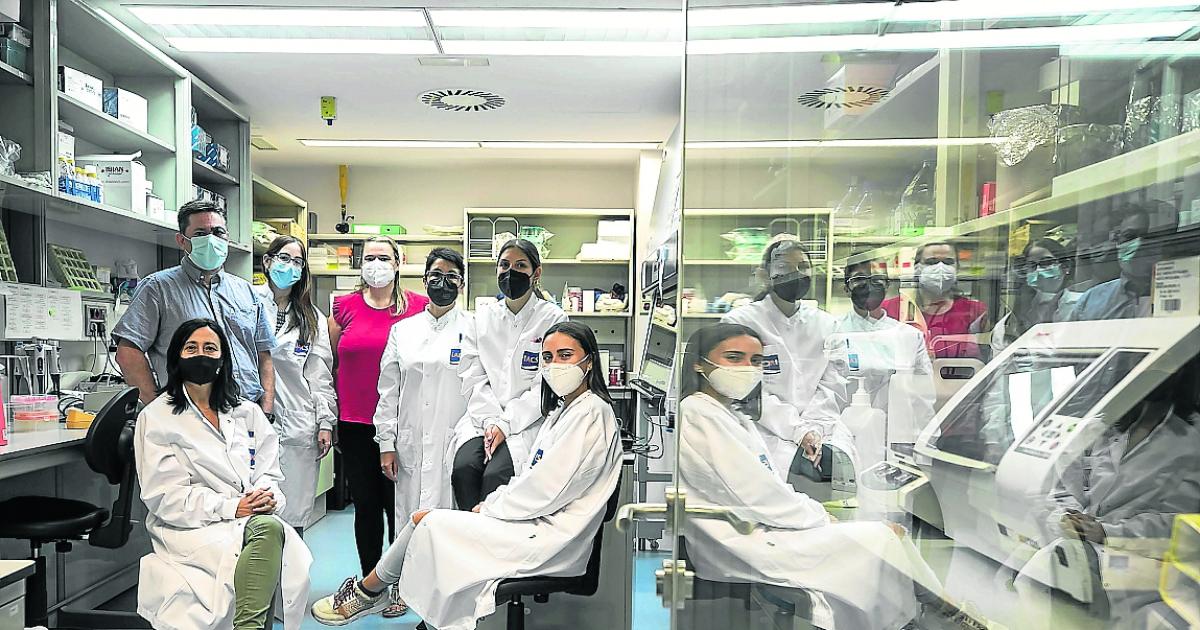Sometimes the coronavirus is elusive: it is there, but it does not show its face in the tests. It escapes the sensitivity of PCR tests, which are negative even though the person is infected. These false negatives are beginning to be detected thanks to a new diagnostic test that has been applied since June at the Royo Villanova hospital in Zaragoza. “It is the only covid research project started from scratch in Aragon that has reached the clinical phase”, highlights Pilar Martín Duque, Araid researcher at the Aragonese Institute of Health Sciences (IACS).
Every Friday, thanks to the IACS biocomputing system (BIGAN), “we do a search for ‘suspects’, cases of patients with pneumonia, all the symptoms of covid and a negative CRP,” he says. «The list is sent to the participating team of Royo, led by Dr. Marcos Zuil, from where they send us the samples collected with nasal swabs that are stored for a time, frozen, and, in the satellite laboratory of the CIBA (Center for Biomedical Research of Aragon), we analyze them ». AND20-25% of the cases passed by this new technique are positive in covid. Being verified that the negative result in PCR turned out to be false. «There is nothing more sensitive. There will be faster or cheaper techniques, but of the conventional ones that we have tried –PCR, antigens, antibodies …–, this new method gains in sensitivity, it is one of the most robust, ”he points out. Zuil is a pulmonologist and especially appreciates the collaboration established between healthcare medicine and basic research.
Among the cases that are unmasked thanks to this technique – which detects the genetic material of the virus contained in the extracellular vesicles – are the recurrent negatives of people admitted: «When the doctor is convinced that it is covid, but the virus does not face it, ”says Martín. The case that has stuck with me the most is that of a person admitted to whom the tests were repeated daily, they had carried out five PCRs, all negative, and we came out positive the first time ».
“It will be a cold”
But there is also another profile of great interest and a lot of risk: that of people who go to the emergency department and go home after the PCR is negative. «Some of these cases are false negatives, infected and contagious people, who remain calm because they have been discharged, They have been sent home with a negative PCR and they think ‘it will be a cold’; if symptoms subside, they lower their guard, sit on a terrace without a mask, or go to work without knowing they are contagious». These COVID positives that ‘escape’ do so now “at a very delicate moment, of relaxation of the measures, so that false negatives pose a high risk of contagion,” warns the researcher. That is why Martín believes that it would be very useful to apply this diagnostic method in all hospitals and health centers.
From a medical point of view, Zuil hopes that, «in the next pending works, the possibility of identifying cases with a worse prognosis from the initial moments will open up; the significance of having a more sensitive method can be enormous, especially for groups of immunosuppressed, patients at risk, asymptomatic people and in the new possible waves or if the disease continues, permanently, with us.
They have met with the association of patients who suffer from persistent covid and “they are very interested,” says Martín, since there are people who, despite presenting serious symptoms, it has not been possible to demonstrate through a diagnostic test that they have had covid. They may need long-term assistance or help and not being qualified as a covid patient can have consequences.
The project led by Martín was among the top 15 that, in April 2020, obtained funding from the Carlos III Health Institute and was one of the four most promising diagnostic projects selected for the meeting with Minister Pedro Duque last year. In full confinement, Pilar Martín was one of the scientists who reoriented her research, directing strategies against COVID that she knew well. His field was oncology and, with funding from the AECC, first, and together with the Aragon Institute of Nanoscience, later, he worked looking for ‘vehicles’ that would bring therapies to cancer cells without damaging healthy tissues. The ‘taxi’ used, as a Trojan horse, were exosomes. A type of cell vesicle where it now detects the most elusive SARS-CoV-2.
– .


